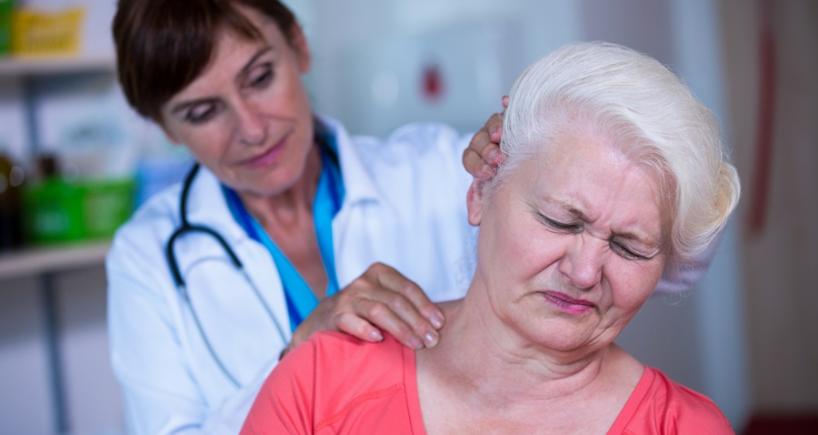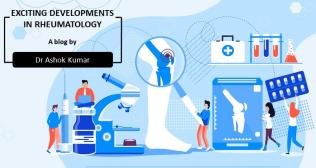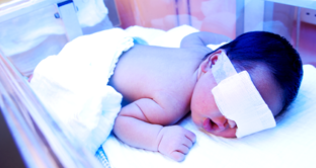
What is Myositis: Causes, Symptoms, Diagnosis, and Treatment
Introduction
Many individuals have experienced sore muscles after extensive exercise, which is temporary and improves with rest. Other conditions that can induce muscle weakness and pain comprise infection, muscle injury from medicines, inherited diseases, imbalance of the electrolytes, and thyroid disorder.
More often, however, the term “myositis” is used to refer to a set of autoimmune diseases involving long-term inflammation of the muscles. Read on to understand more about the causes, symptoms, diagnosis, and treatment of myositis.
Types of Myositis
There are two types of myositis:
- Polymyositis: This type of myositis generally occurs in individuals over 20 years of age. It is more prevalent in females than in males. Its main symptom is muscle weakness that begins in the trunk (neck, hips, back, and shoulders) and worsens over time.
- Dermatomyositis: This type of myositis impacts individuals of all age groups and genders but is more prevalent among females. It manifests as muscle weakness and a rash on the eyelids, cheeks, upper chest, elbows, knees, nose, back, or knuckles.
Unveiling the Causes of Myositis
The inflammation of muscles in myositis is caused by the white blood cells (leucocytes) in our immune system, which are usually supposed to shield the body from infections. However, in myositis patients, these cells begin attacking the healthy muscle fibers and damage or destroy them. This, in turn, impacts muscle function and can lead to tiredness and weakness. It is still not understood why this condition develops or what sets it off for the majority of individuals, though certain risk factors have been identified.
Symptoms of Myositis
- Weakness
- Swelling
- Gradual muscle damage
- Requiring help getting up from a chair, grasping entities with hands, or climbing stairs
- Frequent falls
- Facing difficulty in swallowing food
- Finding it challenging to put their arms up
Diagnosis of Myositis
The first and foremost step in any diagnosis is medical history. Healthcare professionals will ask questions regarding general health, including detailed personal and family health histories. Then, they will enquire about the symptoms. For example, when an individual first saw signs of the skin rash, what made an individual first notice muscle weakness, whether they did anything to treat these manifestations themselves, whether there are certain factors (foods, activities, weather, etc.) that make the manifestations better or worse, whether they had an infection or other ailments around the time the symptoms began showing, etc.
The next step will be a physical examination. The healthcare professional will examine skin symptoms and assess muscle strength. They may ask the patient to demonstrate activities that became challenging because of the weakness, such as walking up the steps, lifting arms overhead, or squeezing something with their hands.
The history and physical examination will give the healthcare professional some insights about a diagnosis. They may then use some diagnostic tests that help confirm a specific diagnosis.
Generally, blood tests are used for the diagnosis, especially measuring the levels of certain muscle enzyme levels, inflammatory markers, and autoantibodies in the blood. They can provide significant clues not only about what may be causing manifestations but also what is not causing them.
Advanced Diagnostic Testing
The advanced tests to collect additional information are usually advised after blood tests are done. These tests may comprise:
- Electromyography (EMG): Electromyographyassesses muscle response or electrical activity in response to a nerve’s muscle stimulation.
- Nerve Conduction Velocity (NCV) Studies: They estimate how fast an electrical impulse propagates through a nerve.
- Muscle Biopsy: A healthcare professional will excise tissue and cells from a particular muscle and observe them microscopically.
Treatment of Myositis
The first choice of treatment for polymyositis (PM) and dermatomyositis (DM), and for most types of autoimmune myositis, is usually corticosteroids to address the inflammation causing the muscle weakness and, at the same time, to suppress the overactive immune system. Supplementary drugs to suppress the immune system are frequently added along with steroids either at the start of treatment or at other times when steroids have been deemed effective in inflammation treatment.
Exercise and Physical Therapy
They are essential parts of standard myositis treatment plans. Physical exertion has been depicted to decrease inflammation, reduce tiredness, increase stamina, and build muscle, even in patients suffering from myositis. Indeed, exercise is presently the only treatment suggestion for patients with myositis.
Self-Care
No diet can treat myositis, but adopting an anti-inflammatory diet may be helpful. Foods in the Mediterranean diet, such as fruits, vegetables, whole grains, fatty fish, and extra virgin olive oil, may prove effective.
Protection from the sun may aid in managing skin and muscle symptoms. Utilizing sunscreen, wearing wide-brimmed hats and protective attires, and keeping away from the sun during peak hours is important.
Following the physical therapist’s guidance for regular physical exertion helps retain muscle strength and flexibility and can prevent muscles from wasting away (atrophy).
Managing stress can aid in boosting the immune system and mood. Mind-body techniques, such as meditation and yoga, may aid with the emotional impact of having a long-term illness. A strong network of friends, family, and trained professionals (for instance, licensed therapists and psychologists) can also provide support during difficult times.
The treatment and management approaches for myositis aim at:
- Reducing inflammation
- Restoring muscle performance
- Decreasing the risk of death
- Enhancing a patient’s quality of life
In case of persisting muscle pain or inflammation, seek medical attention immediately.
Popular Searches :
Hospitals: Cancer Hospital in Delhi | Best Heart Hospital in Delhi | Hospital in Amritsar | Hospital in Ludhiana | Hospitals in Mohali | Hospital in Faridabad | Hospitals in Gurgaon | Best Hospital in Jaipur | Hospitals in Greater Noida | Hospitals in Noida | Best Kidney Hospital in Kolkata | Best Hospital in Kolkata | Hospitals in Rajajinagar Bangalore | Hospitals in Richmond Road Bangalore | Hospitals in Nagarbhavi Bangalore | Hospital in Kalyan West | Hospitals in Mulund | Best Hospital in India | Gastroenterologist in Jaipur | Cardiology Hospital in India
Doctors: Dr. Rana Patir | Dr. Rajesh Benny | Dr. Rahul Bhargava | Dr. Jayant Arora | Dr. Anoop Misra | Dr. Manu Tiwari | Dr. Praveer Agarwal | Dr. Arup Ratan Dutta | Dr. Meenakshi Ahuja | Dr. Anoop Jhurani | Dr. Shivaji Basu | Dr. Subhash Jangid | Dr. Atul Mathur | Dr. Gurinder Bedi | Dr. Monika Wadhawan | Dr. Debasis Datta | Dr. Shrinivas Narayan | Dr. Praveen Gupta | Dr. Nitin Jha | Dr. Raghu Nagaraj | Dr. Ashok Seth | Dr. Sandeep Vaishya | Dr. Atul Mishra | Dr. Z S Meharwal | Dr. Ajay Bhalla | Dr. Atul Kumar Mittal | Dr. Arvind Kumar Khurana | Dr. Narayan Hulse | Dr. Samir Parikh | Dr. Amit Javed | Dr. Narayan Banerjee | Dr. Bimlesh Dhar Pandey | Dr. Arghya Chattopadhyay | Dr. G.R. Vijay Kumar | Dr Ashok Gupta | Dr. Gourdas Choudhuri | Dr. Sushrut Singh | Dr. N.C. Krishnamani | Dr. Atampreet Singh | Dr. Vivek Jawali | Dr. Sanjeev Gulati | Dr. Amite Pankaj Aggarwal | Dr. Ajay Kaul | Dr. Sunita Varma | Dr. Manoj Kumar Goel | Dr. R Muralidharan | Dr. Sushmita Roychowdhury | Dr. T.S. MAHANT | Dr. UDIPTA RAY | Dr. Aparna Jaswal | Dr. Ravul Jindal | Dr. Savyasachi Saxena | Dr. Ajay Kumar Kriplani | Dr. Nitesh Rohatgi | Dr. Anupam Jindal |
Specialities: Heart Lung Transplant | Orthopedic | Cardiology Interventional | Obstetrics & Gynaecology | Onco Radiation | Neurosurgery |












